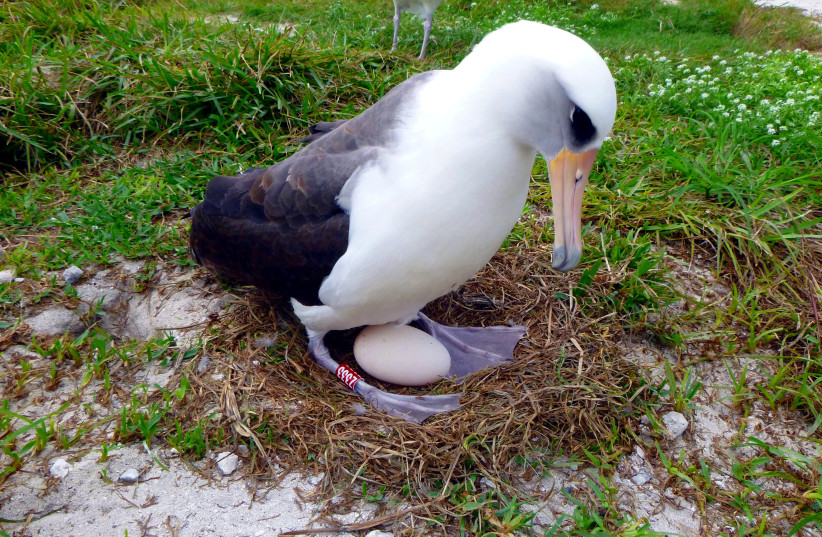Climate change and rising water temperatures are causing the albatross – among the most monogamous animal species in the world – to break up with their partners at increasing rates, according to a new study published in the peer-reviewed scientific journal The Journal of the Royal Society Interface.
The study found that while the rates of partners splitting in the albatross population is low under typical conditions at just 1% to 3%, years that brought unusually warm waters saw a consistent rise in rates of separation, with the highest rate recorded being almost 8% – nearly triple what it is under a normal ecosystem.
The albatross is regarded as one of the most “romantic” species in the animal kingdom, their love lives long a subject of scientific interest. They breed less frequently than typical bird species and invest more time in raising their offspring. Albatrosses are also known for their loyalty to their partner and loud celebrations when partners return from long hunting trips.
Above all, however, the albatross is particularly known for its mating ritual – in which the male and female dance together in an elaborate performance that albatrosses practice for years before they begin to mate.
Researchers studied 15,500 wild albatross breeding pairs in the Falkland Islands from 2004-2019 and found that the most common reason for an albatross pair to split was a reproductive failure. The warmer waters lead to a decrease in fish and other food sources, as well as a harsher environment. Researchers believe the changing climates are a potential catalyst for the increasing “divorce” rates among the seabirds.

While failure to produce offspring is a common reason for partners across all animal species to separate and find new ones, researchers found that even couples who had been successful having children decided to split – a relatively new phenomenon.
Francesco Ventura, a researcher at the University of Lisbon in Portugal and one of the study’s co-authors, hypothesizes that the warming waters forced the birds to fly further distances in order to find food, and if one mate does not return within a period of time, the other albatross may move on to another mate. Ventura further believes that because albatross stress hormones increase in harsher environments, the birds may grow to blame their partner amid their stress.
“We propose this partner-blaming hypothesis – with which a stressed female might feel this physiological stress, and attribute these higher stress levels to a poor performance of the male,” Ventura told The Guardian.
The decrease in mating among the albatross population is of particular concern due to a rapid decline in their numbers worldwide. Albatross populations see a 5% to 10% reduction across the globe every year, with climate change and illegal poaching to blame.
Ventura shared his worry for the drop, saying that "we’re talking about a population with a much lower number of breeding pairs. That disruption of a bond might definitely induce some disturbance in the regular breeding processes.”
